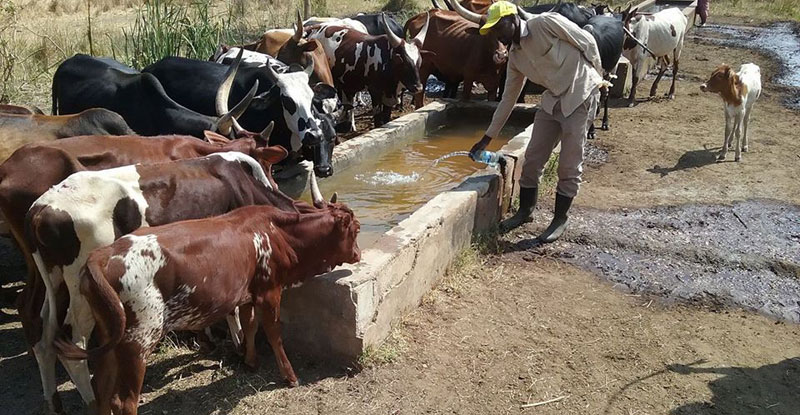News
Climate change and the rising spectre of crop pests
Last year, Masindi and Kapchorwa experienced an upsurge in maize pests. The maize stem-borer was particularly destructive in South Western Uganda according to Kasese district chairman Geoffrey Sibendire, as it destroyed lots of farmers’ crops. The damage was compounded by yet another pest which experts described only as a leaf eater.
According to Stephen Ochen, a maize breeder with the National Crop Resources Research Institute (NaCRRI), the exact identity of the leaf eater that has ravaged maize fields in Kasese is pending laboratory tests that were submitted recently.
But other countries have not been spared either by the growing menace of crop pests. In Southern Africa, the invasive fall armyworm has caused widespread damage in South Africa, the continent’s biggest maize producer, Malawi and Zambia.
In Zambia, the army worm forced the government to deploy aircrafts to spray the invasive pests.
The destruction has not only raised the threat of food insecurity but also undermined trade as many countries do not accept infested produce from source countries. But the worms have multiplied in the wake of a crippling El Nino which scorched much of Southern and Eastern Africa.
Ugandan agricultural experts have also linked the increase in pests to rising temperatures partly due to climate change as well as destruction of forests that used to harbour pests in periods of harsh weather conditions.
“Definitely, the hostile weather conditions are linked to the increase in crop pests and diseases. The pests usually invade crops as they seek cooler areas,” argues Ochen.
The Food and Agricultural Organisation (FAO) issued a warning early this month about the growing threat of pests and diseases on food availability and hygiene.
“A number of trends are contributing to this, including certain types of intensive farming, deforestation, overgrazing and climate change,”FAO says. “In addition, conflicts, civil unrest and globalized trade are all also increasing the likelihood of threats emerging, passing to other countries and becoming devastating in these newly infected countries.”
Fortunately, the scientific community is keenly observing the rapid changes and is developing products to help counter the adverse effects of climate induced stresses.
Take for instance, the BT-Maize variety that is now grown in some 16 countries around the world is able is not only to resist the devastating stem-borer but has also proven resistant to other leaf eaters.
Scientists at the National Crop Resources Research Institute (NaCRRI) also used genetic engineering technology to modify the gene of Cassava Brown Streak Virus which they later integrated into the genome of cassava as a way to immunise the crop against the virus.
In Uganda, GM products have largely proven successful on research stations, but they remain out of reach for farmers who need them due lack of an enabling law.
Supporters of GM technology including scientists and farmers say they are victims of a campaign of misinformation by CSOs that demonises the technology. The anticipated passing of the bill by Parliament will likely give farmers increased options to enable them face up to climate change.
Comments



















